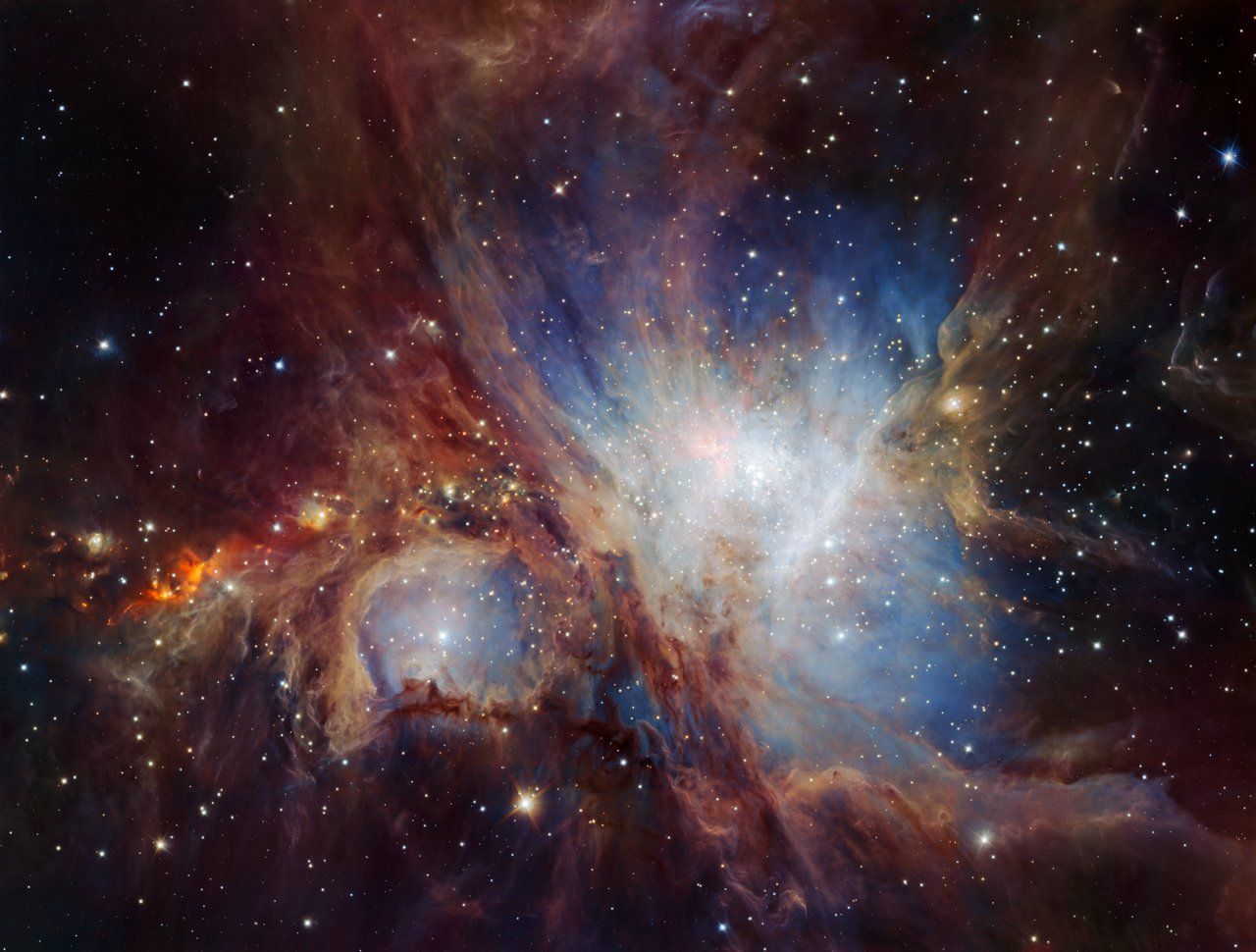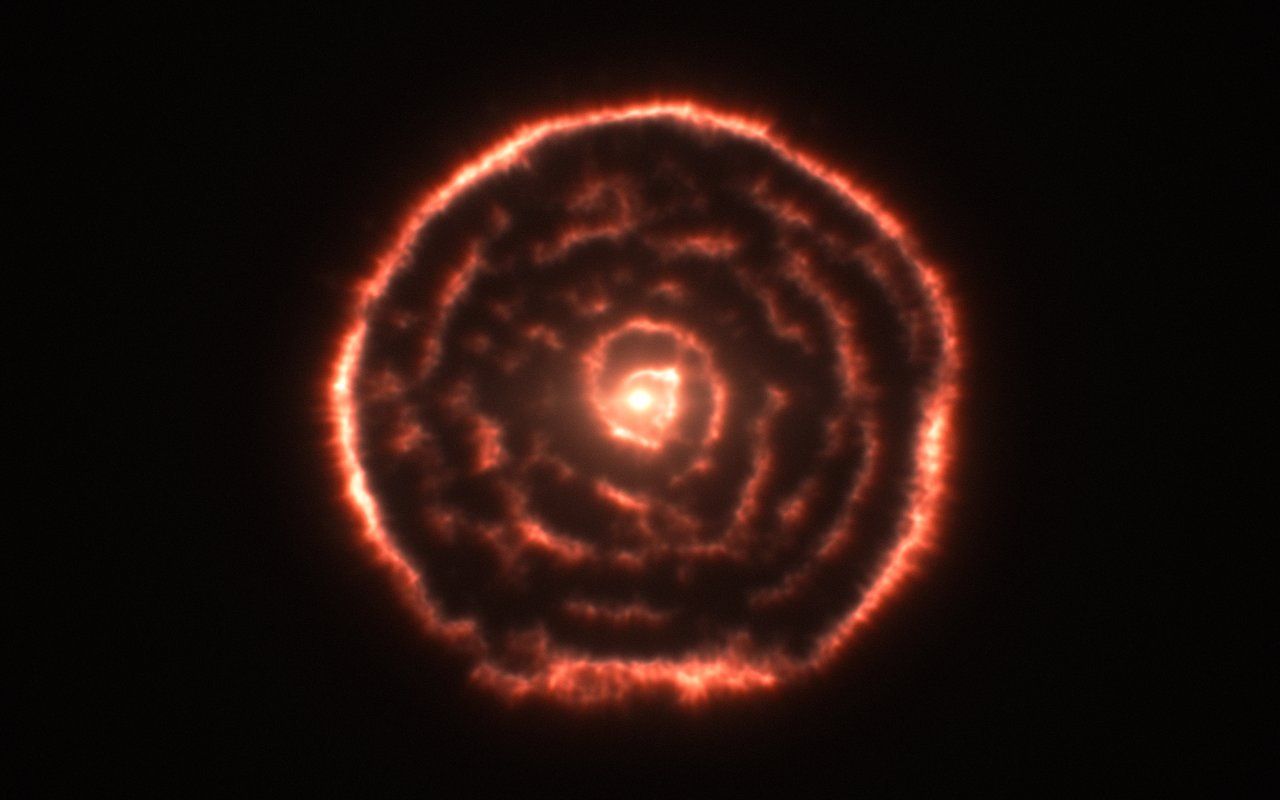This web page is created within BALTICS project funded from the European Union’s Horizon2020 Research and Innovation Programme under grant agreement No.692257.
Astronomy and Astrophysics
Astronomy is a branch of natural sciences that studies natural extraterrestrial objects (stars, planets, asteroids and other small objects, black holes, galaxies, the universe as a whole), as well as interplanetary, interstellar, and intergalactic mediums. The spatial location and movement, structure, chemical composition, temperature and other physical properties of objects, as well as those of the environment, and the natural processes in these objects are studied. Astronomy is closely linked to mathematics, physics and chemistry, as well as geography, geodesy and cartography.
Astrophysics is a sub-branch of astronomy that studies the physical properties and physical processes of natural extraterrestrial objects (commonly referred to as celestial objects or celestial bodies), as well as the environment outside the Earth's atmosphere.
Astrophysics also includes astrochemistry, which studies the chemical composition and chemical reactions in celestial objects and the medium. These studies are based on the idea that the laws of nature are the same everywhere throughout the universe.
Experimental results, theories and equations of physics and chemistry obtained and deduced in laboratories on Earth are used in the interpretation of the astronomical observations. But there are also a number of astronomical observations that spark hypothesis, test, or refine the fundamental physical theories that cannot be experimentally tested in laboratories on Earth with current technological means. Some examples are the detection of gravitational waves in astronomical observations; detection of solar neutrino oscillations; acceleration of the expansion of the universe, which indicates a non-zero cosmological constant in Einstein's gravitational field equations. Very interesting object of astrophysical research are cosmic rays, in which the nuclei of atoms move almost at the speed of light, and their energy is incomparably higher than the measurable maximum in any existing or foreseeable future of accelerators of elementary particles.
The main research directions of the Department of Astronomy and Astrophysics of the VIRAC are the followings:
I. Studies of Interstellar and circumstellar medium
Stars are formed from interstellar gas, and from old, evolved stars that emit gas and dust, enriching the interstellar medium with heavy chemical elements synthesized deeply in the stars. There are a lot of chemical reactions taking place in gas and dust. Both organic chemicals (aldehydes, alcohols, amino acids, aromatic hydrocarbons, etc.), which could be one of the precursors of life on various celestial bodies, and free radicals and ions (OH, etc.) that would react immediately or be neutralized in Earth’s environment, are found in outer space. These studies deepen knowledge of the essential stages of the life cycle of cosmic matter and of the properties of matter under extreme conditions that are not and will not be possible on Earth, at least in foreseeable future. It can also play an important role in the development of new chemical technologies.
VIRAC is conducting the following research:
Theoretical Astrochemistry (J.Kalvāns, A.Vasjuņins). Chemical reactions in interstellar dust and gas, especially in dense interstellar clouds, which are areas of new star formation, are numerically modeled. The theoretically calculated chemical composition of the interstellar clouds is compared with the results of observations obtained with various radio telescopes in the world - mainly in the frequency ranges of tens and hundreds of GHz, which are not available with VIRAC radio telescopes. Particular attention is paid to the effects of cosmic rays on dust temperatures and chemical reactions.
The infrared screenshot of the star formation area of the Orion nebula that was shot using the infrared camera called HAWK-1, instrument installed on the Very Large Telescope (VLT) located in the European Southern Observatory (ESO) in Chile. The composite screenshot is made from the observations in the 1,258 μ, 1,62 μ un 2,146 μ bands.
Credit: ESO/H. Drass et al.
Observations of galactic masers (I.Šmelds, A.Aberfelds). A maser is a laser that operates in the radio wavelength range. Natural cosmic masers operate primarily in the same dense interstellar clouds and new star-forming areas studied by VIRAC astrochemists. Masers of methanol CH3OH and excited hydroxyl OH* are regularly observed with VIRAC radio telescopes in single antenna mode, and formaldehyde HCOH masers have also been observed. At the end of October 2019, the entire European large-scale radio interferometry network EVN jointly observed methanol masers in accordance with the observation program jointly developed by the VIRAC and the N. Copernicus Astronomy Center of the Polish Academy of Sciences (Torun).
Gas - dust shells emitted by the asymptotic giant branch star R Sculptoris. Observations were made at a wavelength of 0.87 mm with the ALMA radio telescope complex in Chile. Credit: ALMA (ESO/NAOJ/NRAO)/M. Maercker et al.
Investigations of gas-dust shells of evolved stars (J.Freimanis, R.Peženkovs). Stars having mass of about 2 to 8 solar masses on the main sequence (at a stage similar to the Sun's current stage of evolution) expand and turn into red giants after the complete conversion of hydrogen to helium. In the spherical layer around the helium nucleus, hydrogen continues to transform into helium, the nucleus shrinks and becomes more massive, denser and hotter. There comes a moment when new nuclear reactions begin in the nucleus - helium is converted into carbon and oxygen, and the star changes its observed (surface) temperature, radius and luminosity in a complex way; such stars are called asymptotic giant branch (AMG) stars. Most AMG stars eject enormous amounts of material processed in nuclear reactions into interstellar medium in a short time, forming dense, opaque gas-dust envelopes; the AMG star turns into an after-AMG object, then a planetary nebula, and eventually a white dwarf. The discharge of the matter is very often asymmetrical (most often bipolar), and in some directions the shell is partially transparent; the emitted gas shines in the colours of various spectral lines, and the scattering of light and infrared radiation on dust grains causes strong polarization. VIRAC is developing software for numerical modelling of these processes to test various hypotheses about the mechanism of asymmetric release of matter.
II. Research in physics of solar atmosphere
Solar physics is a branch of astrophysics that studies physical processes on the surface of the Sun, in the Solar atmosphere (chromosphere and corona), and in the depths of the Sun.
Solar radio astronomy is a branch of astronomy that studies the nearest star, the Sun, in the range of radio waves.
The Solar atmosphere is actually a gigantic laboratory of natural magnetohydrodynamics, where very complex non-stationary magnetic field topologies are realized. Energy comes from the deepest layers of the Sun as the electromagnetic radiation, by convection and various types of wave energy. The solar wind is constantly emanating from the solar atmosphere; from time to time magnetic field lines are reconnected, and solar flares occur with large ejections of plasma and charged particles into interplanetary space. Such large-scale processes cannot be reproduced in laboratories on Earth.
Research in solar physics is of great practical importance, as it allows to predict the flow of charged particles in interplanetary space (space weather) and near the Earth, which is very important both for the safety of spacecraft and habitable space stations. They affect Earth's biosphere, including humans health. This research allows to improve magnetic storm forecast. The biggest solar flares can, in principle, knock out virtually any communications and even electricity system on Earth.
VIRAC is doing the following research:
- Research of solar active regions (sunspots and their groups) in microwave domain (D.Bezrukovs, B.Rjabovs, A.Vrubļevskis). Systematic solar observations are performed with the VSRC radio telescope RT-32, and preparations are underway for the first solar observations with LOFAR in single station mode. Solar radiation maps at different frequencies with different (left and right circle) polarization are created;
- Theoretical modeling and research of magnetic field of solar active regions and coronal structures (B.Rjabovs, A.Vrubļevskis). Available observational data in all spectral ranges (radio waves, visible light, ultraviolet radiation, X-rays) is used to study plasma emissions from isolated sunspots, and a theoretically modeled solar magnetic field topology distinguishes closed magnetic field lines from virtually open lines (at the end, all lines of the magnetic field are closed because there are no magnetic monopoles; the magnetic field is a relativistic correction of the electric field in the case of moving electric charges).
III. Mathematical theory of polarized radiative transfer
Multiple scattering of radiation in the medium is called radiative transfer. We obtain most of the information about celestial objects from their observed radiation, so it is important to understand how the intensity, spectrum, polarization, and variability of observed radiation develop over time depending on the structure and properties of the object. Nowadays, the propagation of radiation in real objects is usually modeled numerically, but analytical mathematical theory allows to understand the qualitative properties of radiation and, by numerically modeling the simplest cases, to check the correctness of the respective computer codes. This theory is also used in many other fields, such as meteorology, remote sensing of the Earth, design and operation of nuclear reactors.
J. Freimanis has been conducting such studies at VIRAC for a long time. Green's function of the polarized radiation transfer equation in an infinite, homogeneous, isotropic, mirror-symmetric medium in the case of cylindrical symmetry, as well as the cylindrically symmetric eigenfunctions of the transfer equation in such a medium are obtained. A general method is constructed for the derivation of a transport operator in an arbitrary curvilinear coordinate system without and with refraction was derrived; open expressions of the polarized radiation transfer equation in the most important orthogonal curvilinear coordinate systems without refraction were written.
IV. Research on active galaxy nuclei
Active galaxies are galaxies that differ significantly from most galaxies in some specific aspect. These include radio galaxies with unusually intense radio radiation (e.g. Cen A, 3C98, 3C31), Seyfert galaxies (intense radiation across the spectrum, similar to quasars, but with a clearly distinguishable peripheral part of the galaxy), BL Lacertae-type galaxies (or BL Lacertae objects - intense, strongly variable radiation with a high degree of polarization), blazars - the nuclei of galaxies, from which a relativistic jet of matter is expulsed almost towards the observer, Markarian galaxies (unusually intense ultraviolet radiation), quasars and others. As a rule, these features are specific to the galactic nuclei, which are supermassive black holes (106 - 1011 solar masses) in all cases. The fact that the specific radiation comes from the nucleus of a galaxy is proved by the characteristic time of variability of active galaxies, which cannot be significantly longer than the time during which a signal traveling at the speed of light is able to cross the emitting area.
A.Suharevs and Vl.Bezrukovs are engaged in the research of active galaxies in the VIRAC. With the VIRAC radio telescope RT-32, they observe the variability of several types of galaxies both during one day and over longer periods. Properly interpreted, such observations can help to explain the mechanisms of galaxy nuclei variability.
V. Studies of small bodies of the solar system
The small bodies of the solar system are asteroids, comets, Kuiper belt objects and others. This is a sub-branch of astronomy which, due to historical reasons, is dealt with by the High Performance Computing Division (HPCD) within the VIRAC, rather not by the Division of Astronomy and Astrophysics. See for details in the website of HPC department of the VIRAC.




















